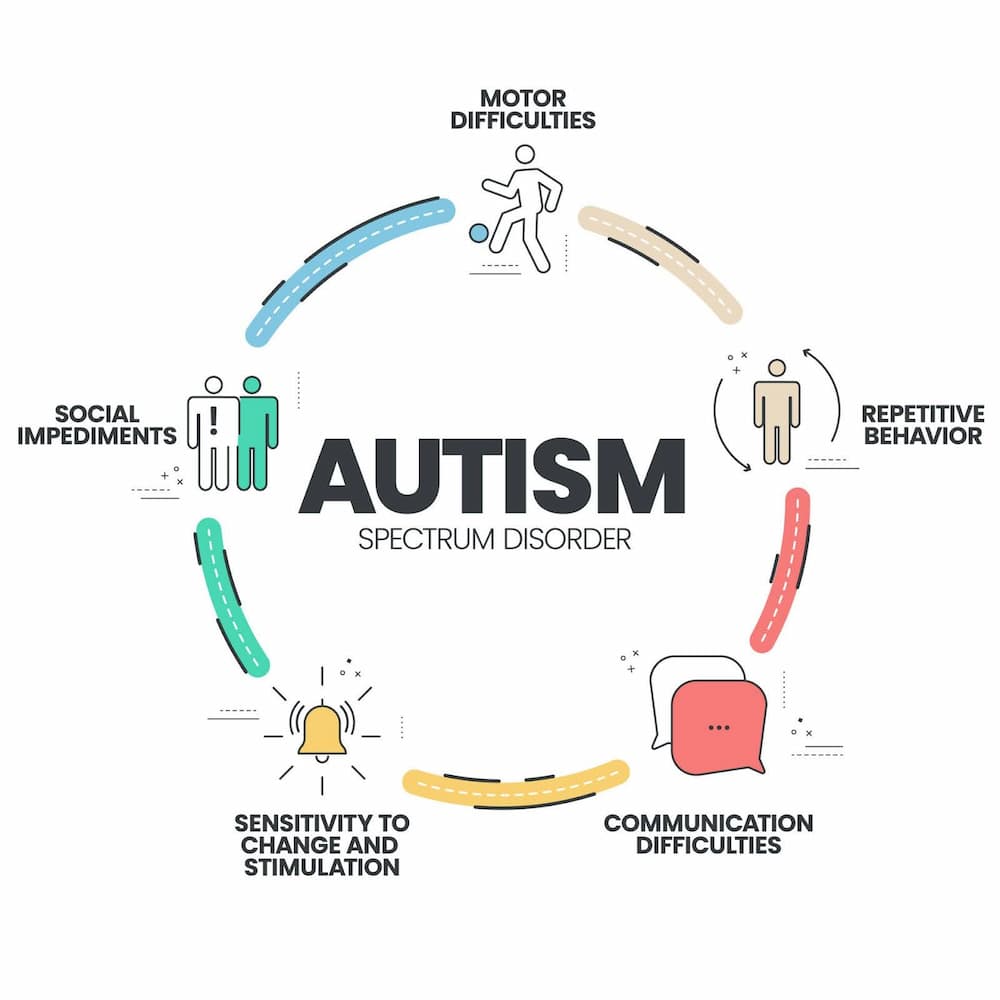The Effect of Early Treatment on Kids with Autism: What Moms And Dads Required to Know
The Effect of Early Treatment on Kids with Autism: What Moms And Dads Required to Know
Blog Article
Exploring Autism: Approaches for Efficient Interaction and Interaction
Reliable interaction and interaction with individuals on the autism spectrum demand a comprehensive understanding of their special demands and preferences. Strategies such as utilizing clear language, utilizing visual supports, and cultivating consistent regimens can significantly enhance engagement and decrease anxiousness. Furthermore, acknowledging the value of non-verbal hints and shared passions leads the method for meaningful links. Nevertheless, the complexities of these methods expose further considerations that warrant expedition, particularly in how they can be adjusted to diverse contexts and private experiences. What might these adaptations resemble in method?
Comprehending Autism Spectrum Condition
Autism Range Problem (ASD) includes a variety of neurodevelopmental problems identified by challenges in social communication, communication, and repetitive behaviors. The term "range" reflects the varied symptoms and varying levels of seriousness experienced by individuals with ASD. While some might display substantial disabilities, others might display high-functioning traits, enabling higher freedom in life.
The onset of ASD generally takes place in very early childhood, with indicators often recognizable by age two. Very early indicators may consist of delayed speech advancement, minimal eye call, and troubles in comprehending social signs. The accurate etiology of ASD stays vague, research study suggests a combination of ecological and genetic variables plays an important role in its advancement.
Individuals with ASD frequently possess special staminas, such as enhanced focus to information and extraordinary memory abilities. They might have a hard time with understanding abstract concepts and taking care of modifications to routine - autism. Because of this, treatments and assistance tailored to specific demands are crucial for cultivating communication and social abilities. Identifying the complexity of ASD is vital for advertising recognition, acceptance, and effective approaches that facilitate purposeful interactions with people on the range.

Importance of Clear Communication
Effective communication is essential for cultivating understanding and link, particularly for people with Autism Range Problem (ASD) Clear communication not only facilitates social interactions however likewise improves the person's capacity to share their ideas, demands, and feelings. For individuals with ASD, the subtleties of language can typically be challenging; for that reason, using uncomplicated and unambiguous language is important.
In addition, clear interaction helps in reducing frustration and anxiousness that may emerge from misunderstandings. When messages are shared in a consistent and straight manner, people with ASD are much better furnished to analyze info properly, which can substantially boost their social interaction and engagement in various settings.
Developing routines and making use of aesthetic supports can additionally bolster clear communication. These methods provide individuals with predictable frameworks that assist understanding and retention of information. Furthermore, proactively listening and being individual throughout interactions promotes a helpful setting where individuals with ASD feel valued and comprehended.
Eventually, focusing on clear interaction not only empowers individuals with ASD however additionally cultivates even more purposeful connections with their peers, caregivers, and the larger neighborhood, leading the way for collective partnerships and comprehensive communications. - autism
Non-Verbal Interaction Techniques
Communication extends beyond words, and for individuals with Autism Spectrum Disorder (ASD), non-verbal cues play a substantial duty in communications. Non-verbal interaction methods can consist of face expressions, gestures, body language, and eye call, all of which serve as important components for conveying intentions and feelings.
Recognizing and interpreting these non-verbal signals can enhance interactions with individuals with ASD. A warm smile or open position can create a welcoming ambience, motivating interaction. Similarly, using aesthetic help-- such as picture cards or signs-- can link interaction spaces and help share messages extra successfully.
It is also vital to be mindful of individual area, as individuals with ASD might have different comfort degrees pertaining to distance. Observing their responses to physical nearness can inform ideal modifications.
:max_bytes(150000):strip_icc()/autism-coping-4686275-v5-0ebcd414a35a481282d891a9d69d4bb9.png)
Creating Encouraging Settings
Producing a supportive environment is essential for fostering favorable interactions and boosting the wellness of individuals with Autism Range Disorder (ASD) Such atmospheres can substantially reduce anxiousness and produce a feeling of security, allowing people to express themselves extra openly.
To achieve this, it is vital to consider sensory level of sensitivities that individuals with ASD might experience. Modifying the physical area to include soft lighting, minimal background noise, and comfortable seats can create a relaxing atmosphere. In addition, utilizing consistent routines and clear aesthetic schedules can assist people anticipate shifts and lower uncertainty, additional advertising comfort.
Social areas more information need to be structured to reduce frustrating stimulations while giving chances for involvement in favored tasks. Helping with locations designated for peaceful time can additionally function as a sanctuary during minutes of anxiety. Significantly, including elements of choice empowers people, permitting them to work out agency in their environment.

Encouraging Social Interactions
Promoting social communications among people with Autism Spectrum Condition (ASD) requires deliberate approaches that prioritize comfort and visit the site involvement. Establishing foreseeable regimens can help in reducing anxiety, making social setups more approachable. Creating organized environments with defined duties and responsibilities allows individuals to involve without the frustrating stress of unstructured social dynamics.
Including interests and staminas right into social tasks can work as a driver for communication. As an example, organizing group activities around shared pastimes or subjects of attraction can assist in natural conversations and connections. Furthermore, making use of aesthetic assistances, such as social scripts or pictorial schedules, can aid in comprehending social hints and expectations.
Modeling proper social actions is essential - autism. Adults and peers need to demonstrate effective communication techniques, consisting of energetic listening and turn-taking. Role-playing circumstances can additionally give a secure space for individuals to practice these skills
Lastly, fostering peer relationships via comprehensive techniques is crucial. Urging comprehensive playdates or team trips can produce opportunities for socialization in a comfy setup. By carrying out these caregivers, strategies and instructors can dramatically boost social interactions for people with ASD, promoting their general social advancement and wellness.
Final Thought
In verdict, effective communication and interaction methods are essential for supporting people with Autism Spectrum Condition. Ultimately, these methods equip individuals with autism to browse social landscapes, advertising their overall wellness and enabling the growth of enduring connections.
Effective communication and interaction with people on the autism range necessitate an extensive understanding of their special requirements and preferences. Clear interaction not just assists in social interactions yet likewise boosts the individual's ability to reveal their ideas, feelings, and needs.Cultivating social communications among individuals with Autism Spectrum Problem (ASD) calls for willful approaches that prioritize comfort and engagement. By implementing view it now these caretakers, techniques and educators can considerably boost social interactions for individuals with ASD, advertising their overall social growth and wellness.
In conclusion, efficient communication and communication approaches are important for sustaining people with Autism Spectrum Condition.
Report this page